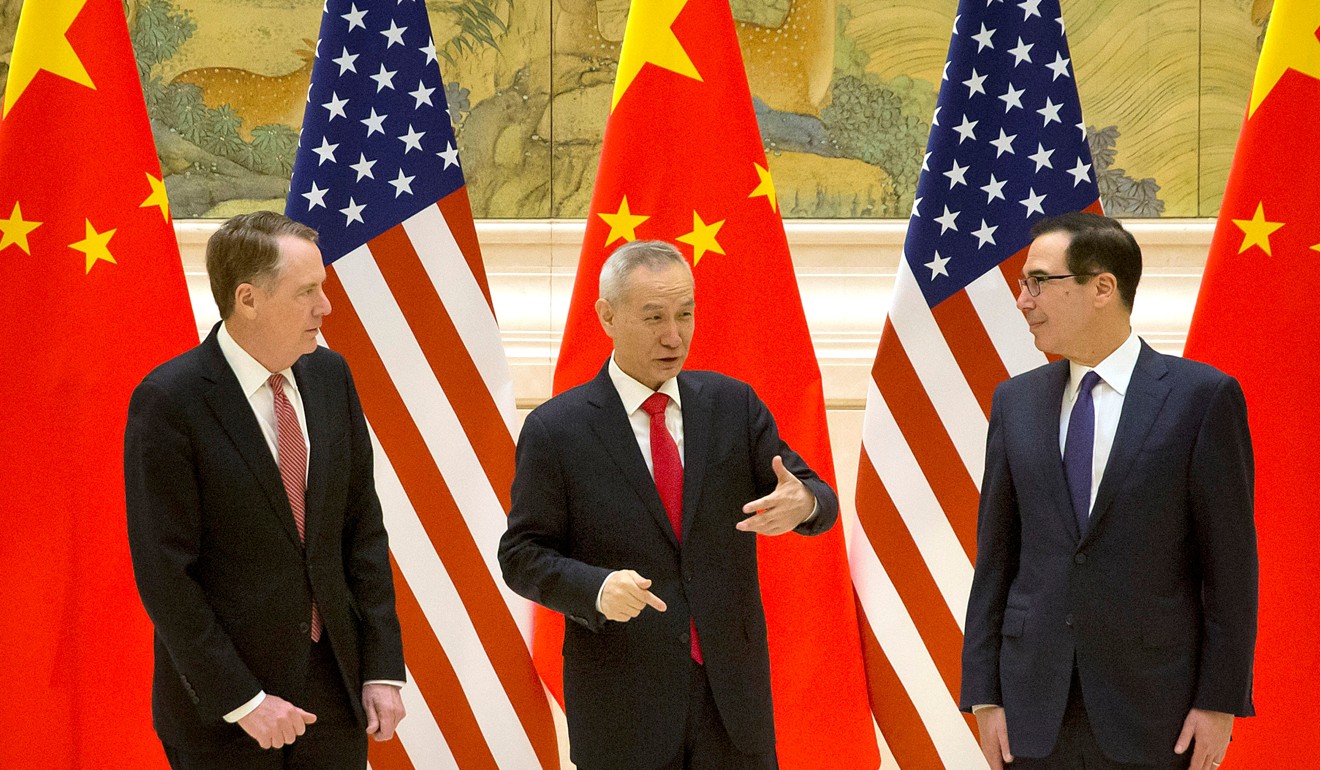
‘Like pulling teeth’: In trade talks, China and US said to be far apart on structural changes by Beijing
- China has proposed parallel talks aimed at resolving Huawei CFO’s extradition case, sources say
- Reform verification mechanism could be a stumbling block in ending the trade war
Chinese and American trade negotiators remain far apart on key issues, including a US demand to ensure Beijing honours any commitment to equal market access and intellectual property protection – an issue Washington sees as crucial in reaching a deal to end the trade war, sources said on Thursday.
“There are already significant doubts about what China is putting on the table,” one of the sources, who is familiar with negotiations, told the South China Morning Post. Over the course of trade talks, China has been recycling the same sort of offers like a “broken record”, the source said, adding that it was a “bad record” that no one on the US side wanted to listen to.
Beijing is offering only “cosmetic, non-impactful offers” on issues crucial to the US, such as industrial government subsidies, said the person, who likened the current negotiations in Beijing to “pulling teeth”.
China’s stonewalling on substantive issues has been met with frustration, said the source.
Negotiators are also discussing the possibility of eliminating the 10 per cent punitive tariffs Washington has imposed on US$200 billion of Chinese products, while leaving the 25 per cent tariffs on US$50 billion of Chinese imports unchanged, two other sources said.
In return, Beijing could pledge to make structural changes that would better protect the intellectual property of foreign companies doing business in China, would expand access to Chinese markets and reduce hefty state subsidies, one person said.
In addition, purchase promises such as US$200 billion of US semiconductors over six years – reported by The Wall Street Journal to have been aired this week in Beijing – would be received well by the US departments of Commerce and the Treasury, which could tout them as victories in US President Donald Trump’s mission to lower the trade deficit, one of the sources said. But hardliners within the administration, including US Trade Representative Robert Lighthizer, are expected to push back against elements of a deal that don’t address structural concerns.
With the March 1 expiration of the 90-day trade war ceasefire just two weeks away, the latest negotiations have picked up where the last round, in late January in Washington, left off. Jointly chairing the talks are Chinese Vice-Premier Liu He, Lighthizer and US Treasury Secretary Steven Mnuchin.
But both sides have been open about the fact that a final deal will need to brokered by the nations’ two leaders.
Indeed, one of Beijing’s primary objectives in sending Liu to Washington in late January was to play for time and to secure an agreement from Trump for a summit with Chinese President Xi Jinping, the first source said, adding that getting Trump “into the same room as an authoritarian leader” was a proven method of exerting leverage.
Another source said that in Washington, China raised the idea of setting up a parallel dialogue aimed at resolving the extradition case of Huawei chief financial officer Sabrina Meng Wanzhou. Huawei, a Chinese telecommunications giant, faces criminal charges in the US and is increasingly being excluded from the 5G market in Western countries.
It is not clear whether the company’s status is a prominent issue in the Beijing talks.
Creating a framework to monitor China’s implementation of structural industry reform is a top priority for the US team, especially Lighthizer.

The US has repeatedly said China does not have a good track record when it comes to implementing its commitments, and its reluctance to trust Beijing has left the countries far apart in their negotiations, a source close to the US government said.
The US delegation has repeatedly insisted that any deal on structural reform must be verifiable and monitored. Under a verifiable mechanism, if China failed to deliver on its promises by an agreed period, the US would immediately impose or raise the tariffs on Chinese products.
Beijing, however, has used the softer phrase “implementation mechanism” to describe the framework for monitoring China’s actions, and resists the idea of giving the US power in this regard, the sources said. The source added that China refused to accept an overhaul of its economic model as a condition for proving its commitment to reform.
Another source familiar with China’s position said it worries that the US would use the verification mechanism to make additional demands on the technology front, which is at the centre of a growing rivalry between the two countries.
If a deal to end the trade talks cannot be reached by the March 1 deadline, the US has said it will increase its punitive tariffs on US$200 billion of products to 25 per cent from the current 10 per cent.
Hopes for a breakthrough in the trade war are increasingly riding on the potential for Trump and Xi to have face-to-face talks in the coming months.
Bloomberg, citing unnamed sources, said on Wednesday that Trump was weighing whether to extend the trade war truce’s expiration date by 60 days.
However, Larry Kudlow, the director of the White House’s National Economic Council, said on Thursday that “no decision” had been made on extending the tariff truce beyond March 1.
“I’ve talked to the group [in China],” Kudlow told reporters. “They’re covering all the ground. They’re hard at it. They are going to meet with President Xi, so that’s a very good sign. They’re just soldiering on. The vibe is good. I can’t give you details.”


